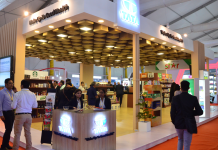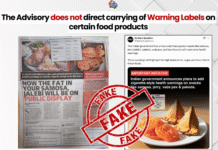
The solution uses QR codes to track each cardboard punnet of fruit, linked to passive UHF RFID-tagged pallets for automated data capture about the product as it travels to stores. The solution was taken live last summer, in the midst of the pandemic, and launched in conjunction with the company’s transition from plastic to sustainable cardboard punnets, say reports in RFID Journal and Machinery Update.
The fresh produce wholesaler sells a variety of products to retailers across Europe and the UK via auction. The strawberries it sells originate from 223 Belgian and Dutch growers. It handles 56 million punnets and 7 million trays each year, it claims.
Previously the strawberries were tracked with a colour code printed on the side of plastic punnets, according to Jeroen Swolfs, Coöperatie Hoogstraten’s junior operations manager. To deliver fresh products on time, the company sends pallet-loads of empty punnets to growers as strawberries are harvested. When received the punnets are filled and then returned to the wholesaler’s site, where they are taken to an auction site and on to stores.
Each pallet contains 1,200 trays of berries, with 30,000 punnets on each pallet. Before the RFID and QR code system’s deployment, trays containing strawberries from different growers were placed on pallets until they were full and could be identified by their code. However, some customers did not want a full pallet, which meant a pallet had to be split, making the supply chain more complex.
“You can never tell exactly how many trays from which grower went to which customer,” Swolfs says. “This is a nightmare for accurate traceability. In the event of a recall there’s a lot of unnecessary product that has to be taken out of the market simply because specific information about each punnet is unavailable.” When the company shifted from plastic to cardboard punnets it saw an opportunity to improve tracking the identity of these containers.
The company chose a hybrid system using QR codes to identify every punnet and link it to a specific grower, and RFID tags to monitor the pallet on which cardboard boxes are stacked and transported. To achieve better traceability it worked with its cardboard and machinery supplier, Smurfit Kappa, which constructed a system to enable automated printing of QR code data on each punnet.
The pallet tag is read by Impinj readers mounted on forklifts, while the QR codes are scanned using cameras in ‘vision tunnels’, provided by VistaLink, according to Lauran D’hanis, Aucxis’s account manager. Aucxis’s Hertz middleware captures all dataand each RFID tag’s ID number. It then manages the data, linking the pallet’s unique ID with the punnet ID. This information is forwarded to Coöperatie Hoogstraten’s enterprise resource planning software.
“We are already starting to think how we can implement RFID technology in our other logistics processes. If there is one thing we learned from the coronavirus crisis,” says Hoogstraten’s director Hans Vanderhallen, “it’s the growing interest of the consumer in short-chain fresh produce.”
IndiFoodBev — authentic, impactful and influential
An English-language food and beverage processing and packaging industry B2B platform in print and web, IndiFoodBev is in its third year of publication. It is said that the Indian food and beverage industries represent approximately US$ 900 billion in revenues which implies more than 20% of the country’s GDP. Eliminating the wastage on the farmside can help to deliver more protein to a higher number of the population apart from generating sizable exports. The savings in soil, seeds, water, fertilizer, energy and ultimately food and nutrition could be the most immense contribution that country is poised to make to the moderation of climate change.
To improve your marketing and grow sales to the food and beverage processing and packaging industry, talk to us. Our research and consulting company IppStar [www.ippstar.org] can assess your potential and addressable markets in light of the competition. We can discuss marketing, communication, and sales strategies for market entry and growth.
Suppliers and service providers with a strategy and budget for targeted marketing can discuss using our hybrid print, web, video, and social media channels to create brand recognition linked to market relevance. Our technical writers are ready to meet you and your customers for content.
The second largest producer of fruit and vegetables in the world is continuously expanding processing capacities and delivery systems with appropriate innovative technologies. We cover product and consumer trends, nutrition, processing, research, equipment and packaging from farm to thali. Get our 2025 media kit and recalibrate your role in this dynamic market. Enhance your visibility and relevance to existing markets and turn potential customers into conversations. Ask for a sample copy of our bi-monthly in print or our weekly IndiFoodBev eZine each Wednesday.
For editorial info@ippgroup.in — for advertisement ads1@ippgroup.in and for subscriptions subscription@ippgroup.in
Naresh Khanna – 10 February 2025
Subscribe Now











